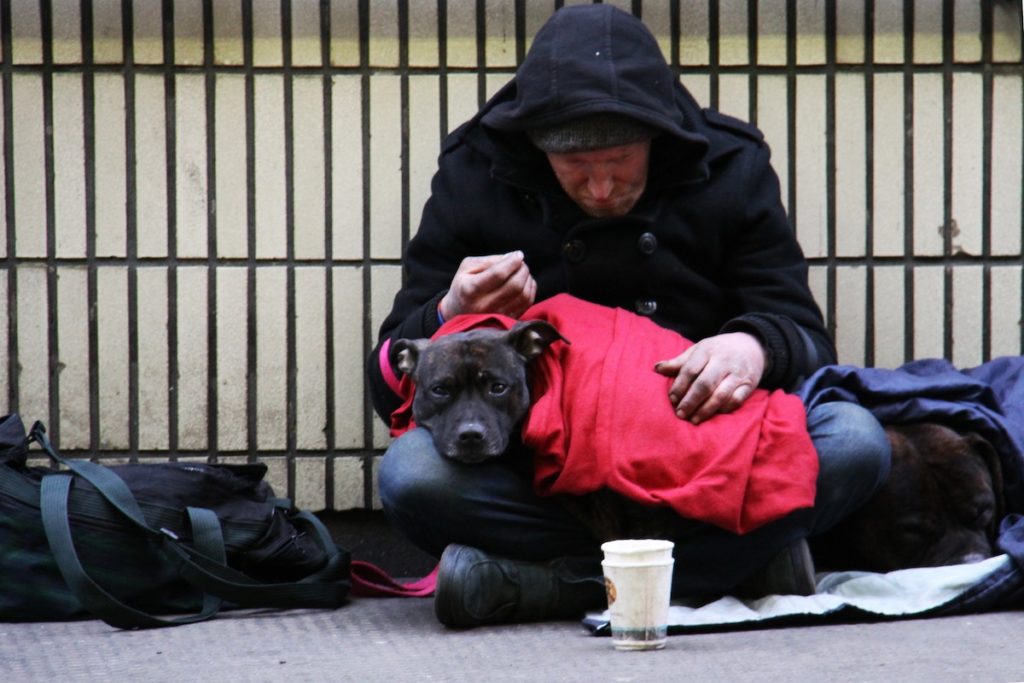
Mental health research is often carried out with ‘patients’ in a health service context. The outcome being studied may be whether, after an intervention, patients got better. Successful resolution might be regarded as their discharge from care.
Other research, equally valuable, but quite different in approach, aims to describe the world. We tend to assume we know how the world is, but sometimes we’re wrong and often we need evidence. This is one such study, the kind of which I’m particularly fond.
The paper that’s the focus of this blog (Walter et al, 2019) describes the likelihood of certain adverse experiences for people in the years after they were discharged from inpatient psychiatric care. While previous research has addressed similar aims, few covered so many different aspects of life, with such a large sample, over so many years.

What happens to people in the years after discharge from inpatient psychiatric care?
Methods
We should envy the Danes’ well-maintained and linkable national population registers. I have a history of envy to confess: I grew up with Danish cousins who never had as much acne as I. Perhaps living in a country with a developed social welfare state and relatively low income inequality was good for the complexion. According to the World Bank (2015), Denmark currently has one of the lowest GINI coefficients in the world. The only personal wellbeing indicator Danes score poorly on is one where they have to rank themselves against others.
While Britain’s libertarian bent ultimately thwarted attempts at a national identity card scheme in 2010, the Danish Civil Registration System has been collating information using unique identifiers since the 1960s. This was further linked by Walter and colleagues to other national datasets: the Psychiatric Central Research Register, Register of Causes of Death, National Patient Register, and the National Crime Register.
The combined dataset is impressive for many reasons:
- Information on a mighty 62,922 individuals with experience of inpatient psychiatric since 1982.
- Equivalent data for a matched comparison group of 1.5 million people without history of psychiatric admission (figures are only meaningful if they can be compared).
- Time: experiences were examined for years after discharge.
- Many different types of adversity were counted: all-cause mortality, suicide, accidental death, homicide victimisation, homicide perpetration, non-fatal self-harm, violent criminality, and hospitalisation following violence.
Results
Following discharge from inpatient mental health care (compared with those without such experience), people were:
- About 8 times more likely to die in the next 10 years
- 10 times more likely to die by accident
- 20 times more likely to die by suicide.
On discharge from inpatient mental health care, people also faced
- Higher rates of self-harm and of violence, as perpetrators but also as victims
- A decade ahead of them where they were five times more likely than the rest of the population to die by homicide.
Using these indicators, male patients were more likely to experience at least one adversity than female patients.
Variations were found by type of diagnosis: these adversities were more common in people diagnosed with substance dependence than in those with a mood disorder.
For suicide and self-harm, risks were most pronounced in the three months immediately post-discharge, for other adversities rates remained consistently elevated for at least a decade.

Mental health inpatients are more likely to experience all types of adversity after leaving hospital.
Conclusions
People with a history of psychiatric admission have been viewed as dangerous. This paper demonstrates their high rates of victimisation, and that they are far more likely than the rest of the population to die: by suicide, by accident, and by the deliberate hand of others.
Many psychiatric inpatients will have already been more vulnerable than the rest of the population before they were admitted. They would have been more likely to have experienced adversities in earlier life, and as the authors make clear, we should not draw conclusions from this study about the quality or ‘success’ of treatment provided.
The main message is that even if deemed ‘well’ on discharge, that does not mean people no longer have needs nor that the community they return to will be a healthy environment in which they can remain safe and well. Many of those who needed particular support at one point in their life, will likely benefit from support again. The adversities counted in this study spanned health and criminal services. It is likely that had indicators of poverty and use of social services also been included, they too would have revealed vulnerability and need. There is a duty of care that extends beyond the hospital, into the community, and this has relevance for many different agencies.

People discharged from inpatient care have high rates of victimisation, and are far more likely than the rest of the population to die: by suicide, by accident, and by the deliberate hand of others.
Strengths and limitations
The great strengths of this study include its large sample, comparison group, range of outcomes, and long follow-up period. Its apparent simplicity of design belies a huge data management and computational task. The study illustrates the scale of informative profiling that can be done when data is made available, for which we should thank the sensible and socially-minded Danish people.
The measures were objectively recorded. While this avoids the potential biases in recall that affect cross-sectional surveys, for some indicators there is the risk that systemic and institutional biases could be reinforced. For example, the police may have been more likely to arrest someone they know had a history of psychiatric admission.
Plus sometimes we want subjective perceptions; such as people’s experiences of social support and informal care, both positive and negative. A study like this works well alongside survey analysis, qualitative research, and views from lived experience.

This research is subject to institutional biases, e.g. the police may have been more likely to arrest someone they know had a history of psychiatric admission.
Implications for practice
My grandmother was discharged from a Danish psychiatric ward in the late 1950s. She was of the silent generation, born before the war. Her experiences in hospital of electroconvulsive treatments left her deeply mistrustful of health services for the rest of her life. The adversities she faced before and after discharge would not have been picked up by this study. This study, however, follows our two youngest adult cohorts: generation X and millennials. It considers those who first received inpatient care since the eighties. It will be important to use data and techniques like these to continue to monitor outcomes for people with inpatient experience.
Improving people’s trajectories post-discharge will require a public health approach. It’s an increasingly familiar call: for tackling knife crime and radicalisation (Bhui et al 2012), problem gambling (Wardle et al, 2019), and loneliness (Leigh-Hunt et al., 2017). It means emphasis is placed on prevention and that success requires more than individual specialist services but a wider, coordinated response from many agencies.
This paper shows that society’s duty of care does not end with discharge. In the initial months following discharge, transitional support is urgent to reduce the risk of suicide and self-harm, but in the long-term, ongoing multi-agency support should be available. If outcomes were this bad in Denmark, elsewhere is likely to be worse.

Support in the first three months post-discharge from mental health inpatient care is urgently needed to reduce the risk of suicide and self-harm.
Conflicts of interest
Sally McManus has coauthored other publications with one of the authors.
Links
Primary paper
Walter F, Carr MJ, Mok PLM, Antonsen S, Pedersen CB, Appleby L, Fazel S, Shaw J, Webb RT. (2019) Multiple adverse outcomes following first discharge from inpatient psychiatric care: a national cohort study. Lancet Psychiatry 2019; 6: 582–89.
Other references
Bhui KS, Hicks MH, Lashley M, Jones E. A public health approach to understanding and preventing violent radicalization. BMC Medicine. 2012 Dec;10(1):16.
Leigh-Hunt N, Bagguley D, Bash K, Turner V, Turnbull S, Valtorta N, Caan W. An overview of systematic reviews on the public health consequences of social isolation and loneliness. Public Health. 2017 Nov 1;152:157-71.[PubMed abstract]
Wardle H, Reith G, E Langham, RD Rogers. (2019) Gambling and public health: we need policy action to prevent harm BMJ 2019;365:l1807.
World Bank. GINI index (World Bank estimate)
Photo credits
- Photo by Mantas Hesthaven on Unsplash
- Photo by Nick Fewings on Unsplash
